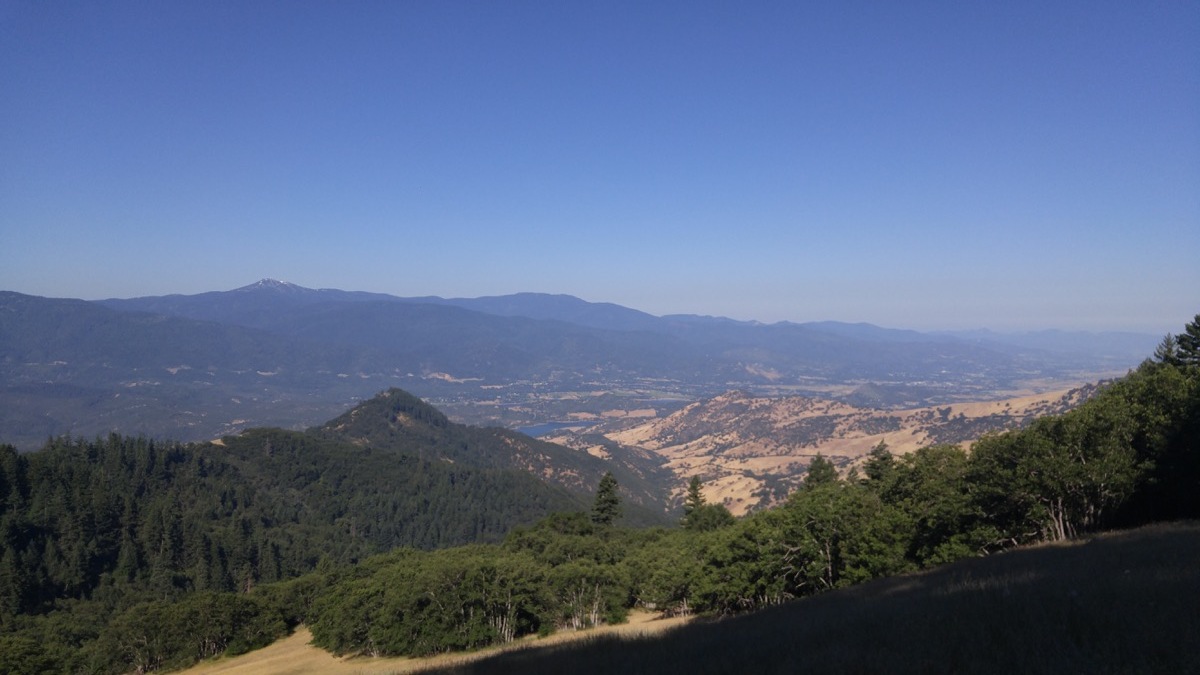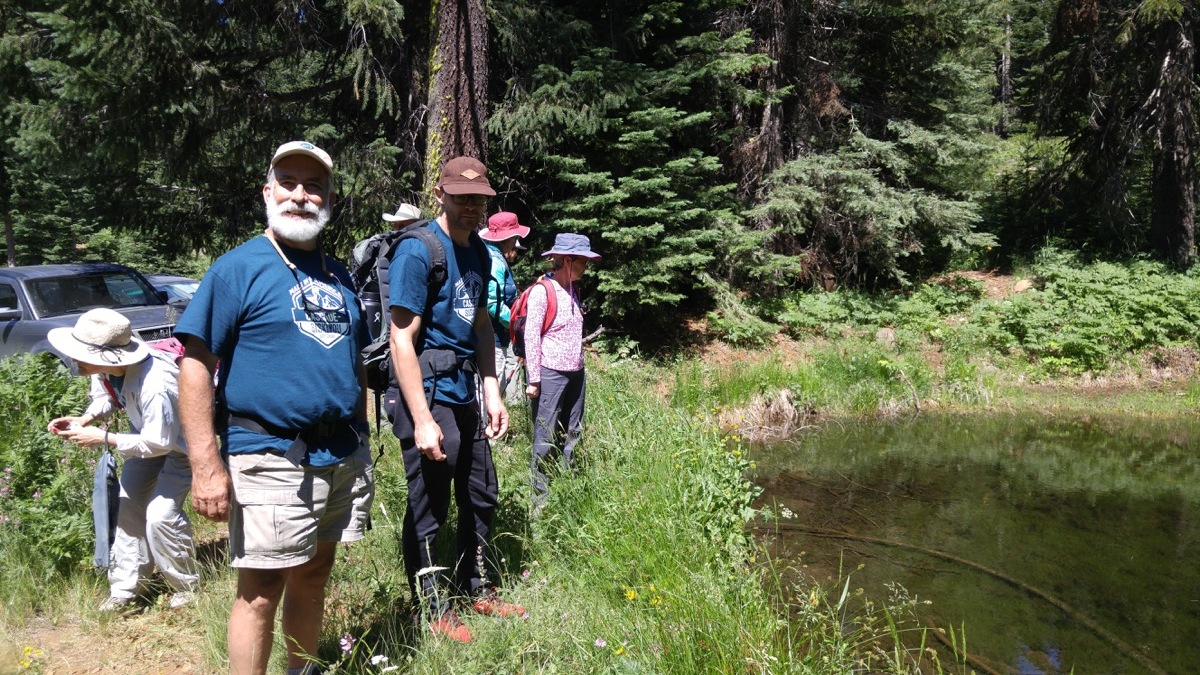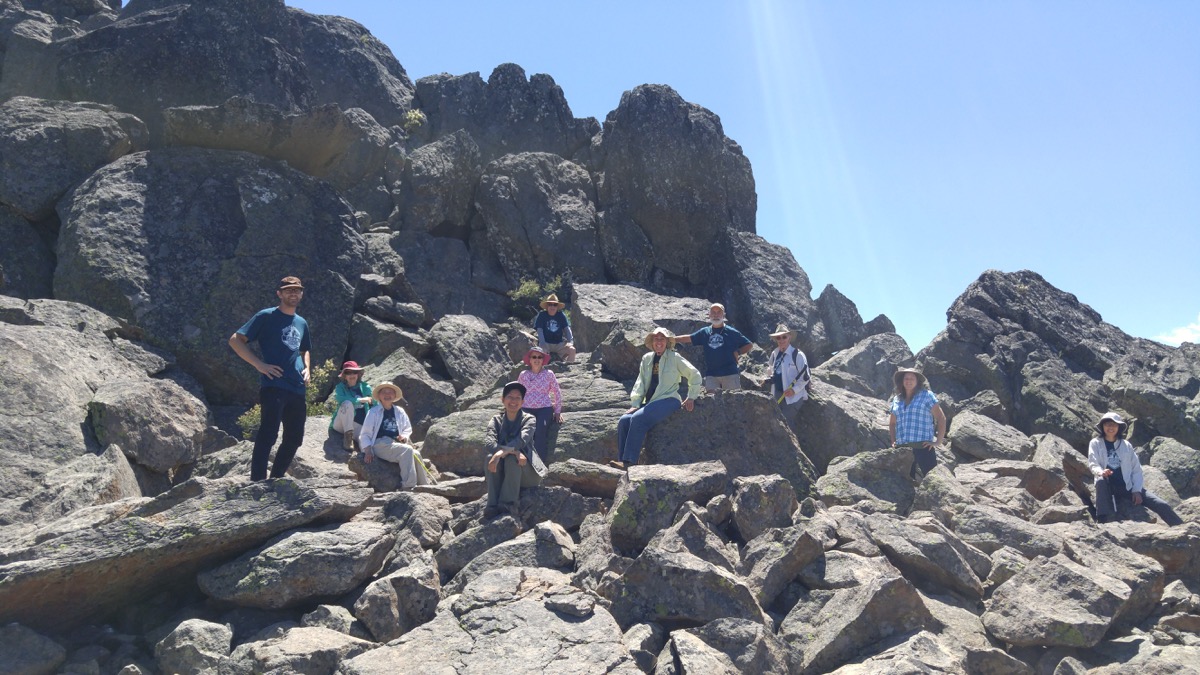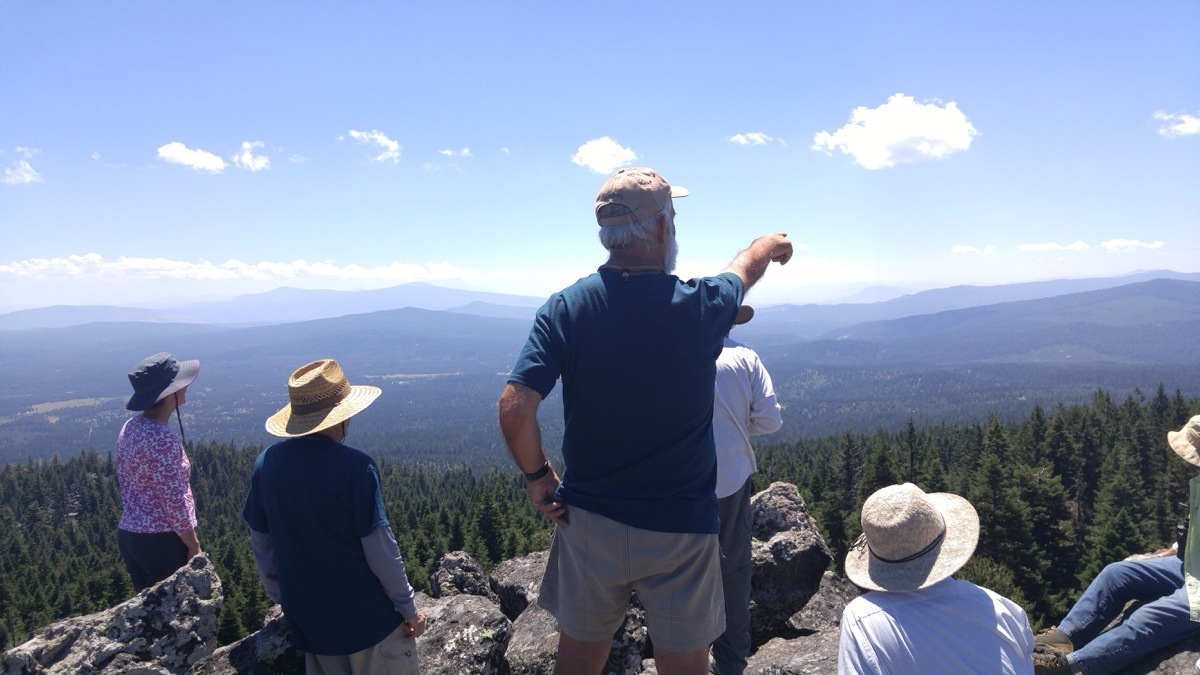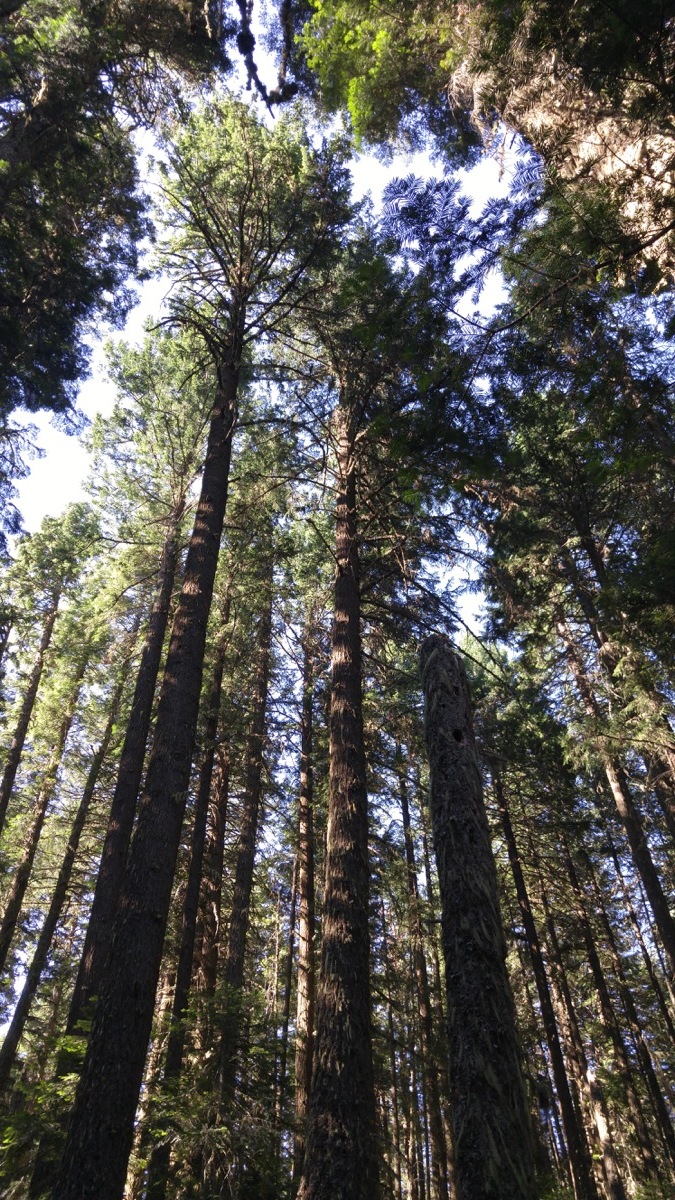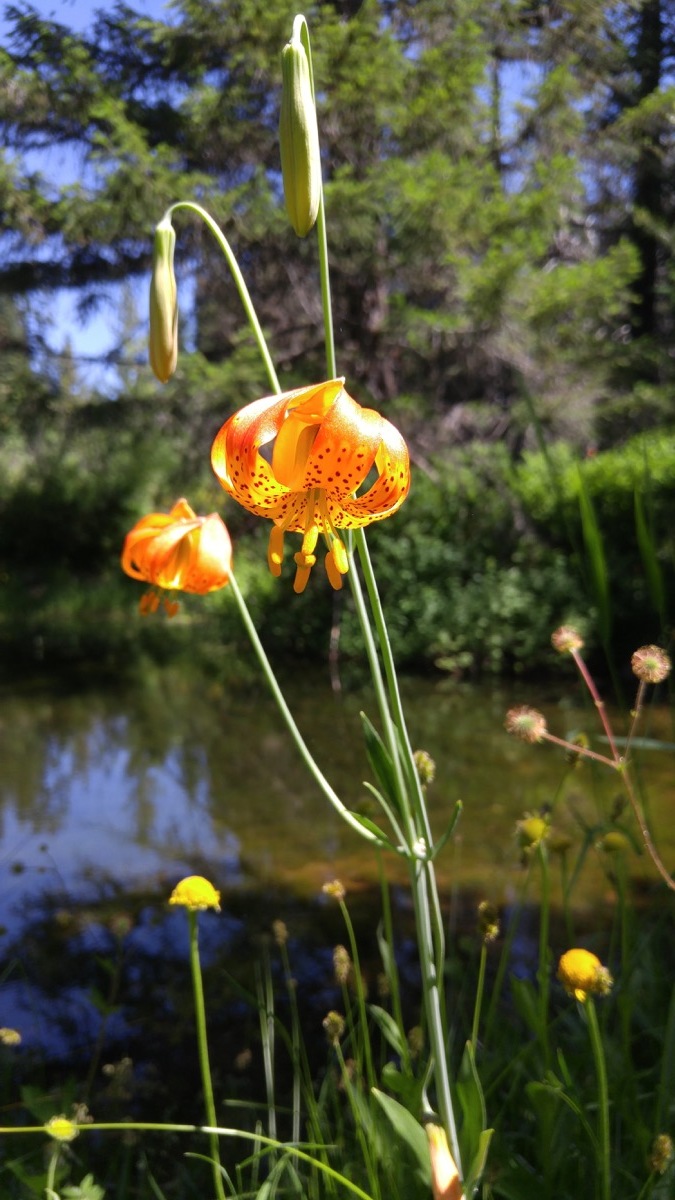At Vulture Rock. Dr. Michael Parker, leads Friends of CSNM Hike & Learn group to view monument expansion. 2017 panorama photo © Benjamin Black
The Cascade-Siskiyou National Monument originally covered almost 53,000 acres across southwestern Oregon. On January 12, 2017 President Barack Obama, expanded the monument boundaries by roughly 47,000 acres. This expansion included some local watersheds, as well as broadened the range of altitudes found within the monument. For our July Hike & Learn, we set out with Dr. Michael Parker, biologist and professor at Southern Oregon University.
At the Friday night talk, Dr. Parker previewed the areas that we would be exploring on our Saturday hike. He explained why some of these places were recommended by scientists to be included in the expansion. This included some private land behind Emigrant Lake and around Grizzly Peak, managed by the Selberg Institute for conservation purposes and providing lower elevation ecosystems not previously included in the monument. It also included higher altitude ecosystems, like the area around Vulture Rock and some of the headwaters of Jenny Creek.
Dr. Parker explained that these areas further represent why the monument is such a special place, encompassing such broad and different ecosystems within its borders. Biodiversity needs the protection of larger landscape and enlarged borders; global change threatens species at lower elevations. The actual expansion has reductions from actual scientific recommendations.
Dr. Michael Parker (2nd left) tells us to look overhead at scenic vistas. TPD photo
On the morning of our hike, we departed for the Green Springs trailhead. From there, we hiked out to our first scenic vista, overlooking the land managed by the Selberg Institute below us, now included in the monument. Green rolling fields, with scattered white oaks cascaded down to Sampson Creek. As we continued around the Green Springs Loop, Dr. Parker stopped to encourage us to look overhead. Scenic vistas are not just broad sweeping views from high places, but can also be peering through interlacing branches of Douglas-fir trees or down across moss-covered logs in the forest. It was on this stretch of trail that we came across recently appointed Secretary of the Interior Ryan Zinke, visiting Cascade-Siskiyou National Monument as part of a Trump review.
We made our way towards Vulture Rock. We drove up past Hyatt Lake and parked at the base of an old forest service road. We were greeted by a spring surrounded by wildflowers, with dragonflies buzzing overhead and more than one rough skinned newt swimming in the water. We walked up the road and then cut into the forest. Finally, after pushing through some mangled golden chinquapin, we broke out of the forest and onto a rocky outcrop.
As we took a moment to rest and eat some lunch, the lone call of a pika rang out across the clearing. Among our group was SOU graduate student Suphasiri Muttamara, who is researching pika call dialects of populations in the monument and nearby areas; this project is funded by the 2017 Friends Research Fund.
Pika are of a group of animals called lagomorphs. These animals are hind-gut fermenters, meaning that the bacteria that break down much of the food that they eat lives in the last portion of their digestive tract. To get more nutrition from their food, lagomorphs will occasionally produce cecotropes, which are moist, soft pellets, different from their fecal pellets. These cecotropes are eaten to gain the nutritional value that would have otherwise been lost.
We put our food away and stowed our packs to begin our ascent. Helping each other along the scramble, we steadily climbed towards the top. The pile of rocks we were clambering about atop of were remnants of an old igneous intrusion. Softer material that had surrounded the pile of rocks has been washed eroded away leaving a tall spire of rock and providing us with a wonderful vista. From atop Vulture Rock, we had a 360-degree view of the monument and many of it’s newly included acres. On one side, we were flanked by Surveyor Mountain, on the other we looked out to see Pilot Rock tucked into place near Mt. Ashland. These landscapes encompass a wide swath of diverse ecosystems that are home to many species of plants, animals, fungi, and more. Some areas are protected by our monument, and its recent expansion, for the sake of these species. Others are trusted to private landowners in hopes that they will manage them properly.
We took our time soaking in the views and then headed back down the slope. We found our packs, cut back through the woods, and then wrapped our trip with one last scenic vista, looking out from our deck chairs at the Green Springs Inn at some cold brews and warm pie.
by John Ward, Hike & Learn Coordinator
Friends of Cascade-Siskiyou National Monument
Gallery of photos by John Ward, except where noted.
